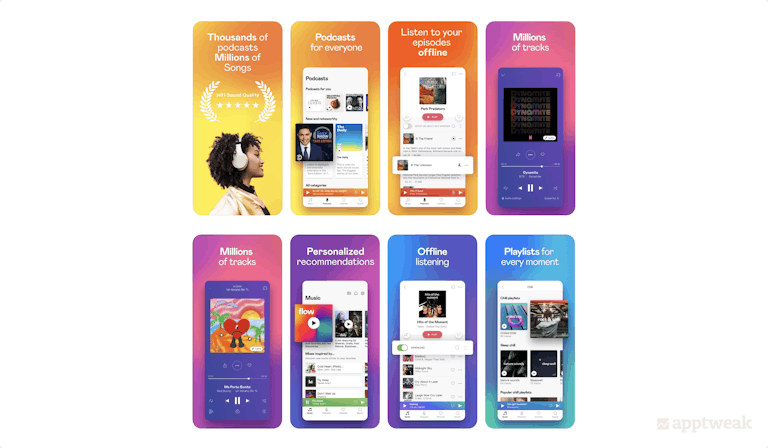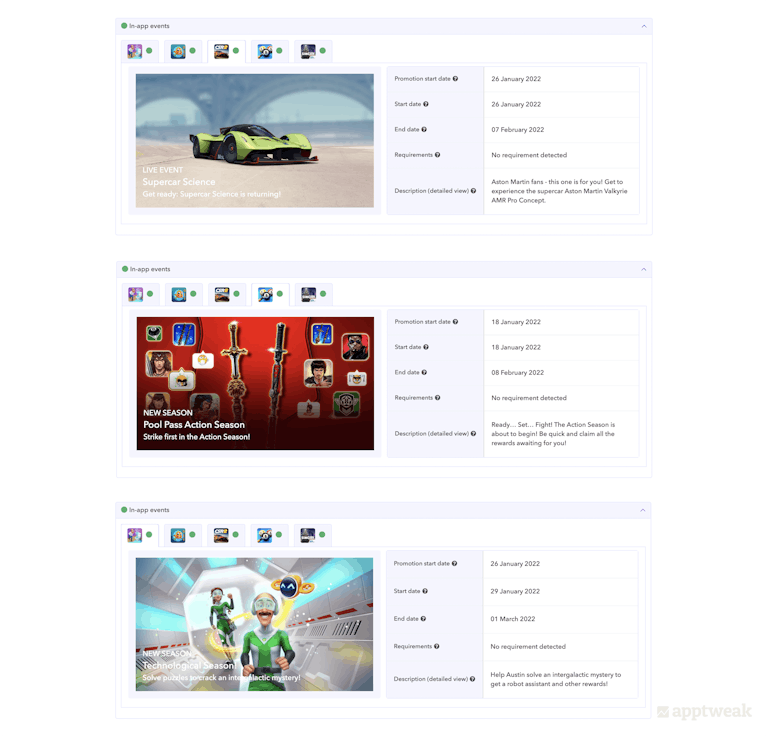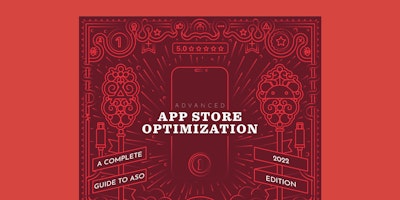
How to Lower Cost per Install (CPI) with ASO
App developers spend more money trying to gain downloads than ever before. Global app install ad spend is expected to double by 2022, hitting a record of $118 billion (Appsflyer). As a result, app marketers are always on the lookout for new ways to increase paid downloads while keeping spending under control. However, some still expect ASO to only increase organic downloads, without considering that ASO should also improve the overall quality of app store pages and help maximize the impact of subsequent paid marketing efforts.
In this blog, we will review the specific ASO techniques that have a direct impact on the success of paid marketing campaigns.
1. Optimize your app creatives
It’s essential to have a consistent and seamless customer journey across app acquisition channels to reduce drop-offs and improve your ad conversion. This makes it important to have a well-optimized product page, which means aligning your store assets, including creatives, with the ads redirecting to your store listings. In this section, we will analyze how you can optimize your creatives to improve conversion.
Follow best practices for app store screenshots
Screenshots are one of the most important elements on your app page to help users decide whether or not to download your app. If you are looking to increase your app’s conversion rate, you should definitely start by reviewing and redesigning your app screenshots.
Remember, many users would naturally rather look at your screenshots instead of reading the long description to get a sense of what your app is about. So the first thing to do is to understand and follow ASO best practices for screenshots. Try to align your screenshots’ messages with the value propositions highlighted through other acquisition channels.
Leverage custom product pages & custom store listings
Creative optimization is all the more important now that app developers can benefit from custom product pages (App Store) or custom store listings (Google Play). These native marketing tools allow app marketers to create unique landing pages intended for user acquisition. These can then incorporate promotional text, screenshots, and app previews that differ from those on the default product page.
For example, Deezer has recently created both a custom product page (iOS) and a custom store listing (Google Play) with a new set of screenshots that rather showcase podcasts over music. With this custom product page, Deezer can then provide a tailored link directing people from a podcast-focused ad campaign to this more relevant product page. With this increased alignment between its offering and the expectations of its ad audience, the app can improve its conversion and lower cost per install (CPI).

- On iOS, you can create up to 35 custom product pages that have a unique URL and can be integrated into Apple Search Ads and other traffic sources (social media, email, etc). Custom product pages can then be used to direct traffic from a particular group of keywords or a particular social media campaign to a specific custom product page.
- On Google Play, you can have up to 50 custom store listings that can be used both for external traffic as well as organic (i.e. if you want to create a tailored custom store listing for a specific market/region). Using these landing pages judiciously will help your ads convert even better.
Expert Tip
Custom product pages can be tailored for a specific semantic ad campaign or ad group. With greater relevancy to store visitors’ needs and expectations, they allow you to maximize alignment between your audience, your creatives, and your offering.2. Improve app store reviews & ratings
Ratings and reviews are the key public indicator of your app’s health. App ratings and reviews play a crucial role in conversion. Users are never keen to install an app with a rating below 4.0 stars and, given the intense competition on the app stores, even an app rated below 4.5 stars is at a disadvantage compared to higher-rated competition. In fact, it has been seen that an increase in average rating from 4.4 to 4.6 can lead to a 30% increase in CVR.
- Setting up a ratings prompt is important to maximize your chance of collecting positive feedback and ratings.
- Replying to reviews has also proven to help increase average ratings. Reviews are a true niche of information – they allow you to understand both user frustrations and the features of your app they enjoy the most. These insights can give you inspiration for future ad campaigns and make their success more likely.
3. Identify potential keywords for Apple Search Ads campaigns
Apple Search Ads have played an important role in user acquisition over the years.
To get the most out of your Apple Search Ads, you need to understand how ASO can help to fuel your Apple Search Ads campaigns. Two factors come into play here:
- Keywords: Search volume, organic rankings, relevancy, and competitiveness
- Custom product pages
With the help of AppTweak’s Search Ads Manager, you’ll be able to identify keywords with high search volumes that are worth investing in. Indeed, highly searched keywords that are relevant to your app can drive downloads with the help of Apple Search Ads. Besides search volume, you should also consider how your competitors are ranking organically or if they’re bidding on these keywords.
Apple Search Ads Manager
Create effective campaigns, monitor performance, and find new opportunities to enhance your Apple Search Ads directly in AppTweak.
Read our comprehensive guide to Apple Search Ads
Bear in mind that the higher your organic ranking, the higher the score Apple will assign your app for Apple Search Ads auctions, which can potentially result in a lower cost per install (CPI). This implies more downloads for the same price. The importance of ASO comes into play here, as well-optimized text metadata can help you increase your organic rankings for targeted keywords.
Expert Tip
See all your organic and paid keyword data in one place and find thousands of new keyword opportunities with AppTweak’s Search Ads Manager.We already discussed the use of custom product pages for conversion purposes. They are just as powerful for Apple Search Ads, if not more. As such, tailoring your custom product pages according to your semantic campaigns will help you boost your conversion rate.
Take a look at these key use cases for CPPs in Apple Search Ads
4. Leverage in-app events to boost user engagement
In-app events on the App Store build hype around upcoming releases in your app/game, which might prevent customers from churning or encourage an already-churned user to re-download your app.
Let’s imagine a simple scenario – you’re about to unsubscribe from a streaming app because you no longer find enticing movies on it. Then, while scrolling through the App Store, you come across an in-app event that highlights that Season 2 of your favorite TV show is about to be released on the app. You might then reconsider your decision to unsubscribe.

Track any in-app events on the App Store with AppTweak (also for promotional content on Google Play)
5. How ASO can help improve Google App Campaigns
Google App Campaigns are a great way to promote your app, as they will subtly place your ads everywhere on Google Play as well as on other acquisition channels, including Search, YouTube, Discover on Google Search, and the Google Display Network, to get your app in front of the right audience.
Somewhat similar to Apple Search Ads, Google relies on your app metadata to understand where and how to promote your app. ASO is, therefore, as important for Google App Campaigns as it is for other acquisition channels. Both the app metadata and creatives will come into play, as the keywords and features displayed in the screenshots will indicate your app’s main features and value proposition to Google’s algorithm.
TL;DR
In an ever-competitive mobile app environment, the quest for downloads requires more and more resources – but ASO might be your best ally. To lower your app’s cost per install and get the most out of your paid campaigns, you should:
- Align your app screenshots with the main value proposition communicated in other acquisition channels.
- Use custom product pages (iOS) and custom store listings (Android) to maximize the alignment of your audience to your app creatives.
- Set up an app ratings prompt to maximize your average ratings and reply to reviews to maintain a strong relationship with your users.
- Consider your app’s organic rankings before launching Apple Search Ads or Google UAC campaigns.
Discover how AppTweak can help you boost your app downloads with actionable insights in a simple interface.



 Micah Motta
Micah Motta

 Oriane Ineza
Oriane Ineza

 Simon Thillay
Simon Thillay

 Sukanya Sur
Sukanya Sur


 Marcos Barceló
Marcos Barceló